Rajeev Verma
Read Your Own Mind: Reasoning Helps Surface Self-Confidence Signals in LLMs
May 28, 2025Abstract:We study the source of uncertainty in DeepSeek R1-32B by analyzing its self-reported verbal confidence on question answering (QA) tasks. In the default answer-then-confidence setting, the model is regularly over-confident, whereas semantic entropy - obtained by sampling many responses - remains reliable. We hypothesize that this is because of semantic entropy's larger test-time compute, which lets us explore the model's predictive distribution. We show that granting DeepSeek the budget to explore its distribution by forcing a long chain-of-thought before the final answer greatly improves its verbal score effectiveness, even on simple fact-retrieval questions that normally require no reasoning. Furthermore, a separate reader model that sees only the chain can reconstruct very similar confidences, indicating the verbal score might be merely a statistic of the alternatives surfaced during reasoning. Our analysis concludes that reliable uncertainty estimation requires explicit exploration of the generative space, and self-reported confidence is trustworthy only after such exploration.
On Calibration in Multi-Distribution Learning
Dec 18, 2024
Abstract:Modern challenges of robustness, fairness, and decision-making in machine learning have led to the formulation of multi-distribution learning (MDL) frameworks in which a predictor is optimized across multiple distributions. We study the calibration properties of MDL to better understand how the predictor performs uniformly across the multiple distributions. Through classical results on decomposing proper scoring losses, we first derive the Bayes optimal rule for MDL, demonstrating that it maximizes the generalized entropy of the associated loss function. Our analysis reveals that while this approach ensures minimal worst-case loss, it can lead to non-uniform calibration errors across the multiple distributions and there is an inherent calibration-refinement trade-off, even at Bayes optimality. Our results highlight a critical limitation: despite the promise of MDL, one must use caution when designing predictors tailored to multiple distributions so as to minimize disparity.
Learning to Defer to a Population: A Meta-Learning Approach
Mar 05, 2024Abstract:The learning to defer (L2D) framework allows autonomous systems to be safe and robust by allocating difficult decisions to a human expert. All existing work on L2D assumes that each expert is well-identified, and if any expert were to change, the system should be re-trained. In this work, we alleviate this constraint, formulating an L2D system that can cope with never-before-seen experts at test-time. We accomplish this by using meta-learning, considering both optimization- and model-based variants. Given a small context set to characterize the currently available expert, our framework can quickly adapt its deferral policy. For the model-based approach, we employ an attention mechanism that is able to look for points in the context set that are similar to a given test point, leading to an even more precise assessment of the expert's abilities. In the experiments, we validate our methods on image recognition, traffic sign detection, and skin lesion diagnosis benchmarks.
Learning to Defer to Multiple Experts: Consistent Surrogate Losses, Confidence Calibration, and Conformal Ensembles
Oct 30, 2022Abstract:We study the statistical properties of learning to defer (L2D) to multiple experts. In particular, we address the open problems of deriving a consistent surrogate loss, confidence calibration, and principled ensembling of experts. Firstly, we derive two consistent surrogates -- one based on a softmax parameterization, the other on a one-vs-all (OvA) parameterization -- that are analogous to the single expert losses proposed by Mozannar and Sontag (2020) and Verma and Nalisnick (2022), respectively. We then study the frameworks' ability to estimate P( m_j = y | x ), the probability that the jth expert will correctly predict the label for x. Theory shows the softmax-based loss causes mis-calibration to propagate between the estimates while the OvA-based loss does not (though in practice, we find there are trade offs). Lastly, we propose a conformal inference technique that chooses a subset of experts to query when the system defers. We perform empirical validation on tasks for galaxy, skin lesion, and hate speech classification.
Calibrated Learning to Defer with One-vs-All Classifiers
Feb 08, 2022
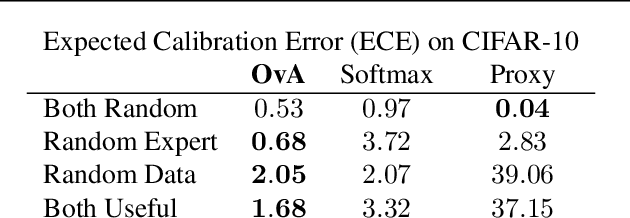

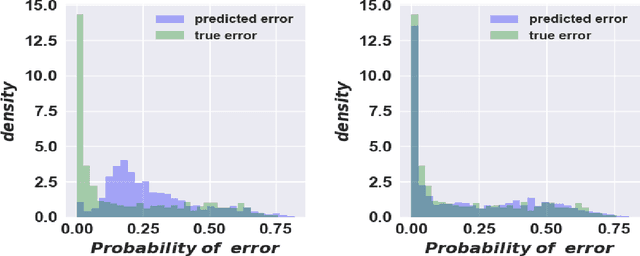
Abstract:The learning to defer (L2D) framework has the potential to make AI systems safer. For a given input, the system can defer the decision to a human if the human is more likely than the model to take the correct action. We study the calibration of L2D systems, investigating if the probabilities they output are sound. We find that Mozannar & Sontag's (2020) multiclass framework is not calibrated with respect to expert correctness. Moreover, it is not even guaranteed to produce valid probabilities due to its parameterization being degenerate for this purpose. We propose an L2D system based on one-vs-all classifiers that is able to produce calibrated probabilities of expert correctness. Furthermore, our loss function is also a consistent surrogate for multiclass L2D, like Mozannar & Sontag's (2020). Our experiments verify that not only is our system calibrated, but this benefit comes at no cost to accuracy. Our model's accuracy is always comparable (and often superior) to Mozannar & Sontag's (2020) model's in tasks ranging from hate speech detection to galaxy classification to diagnosis of skin lesions.
Automatic detection of lesion load change in Multiple Sclerosis using convolutional neural networks with segmentation confidence
Apr 05, 2019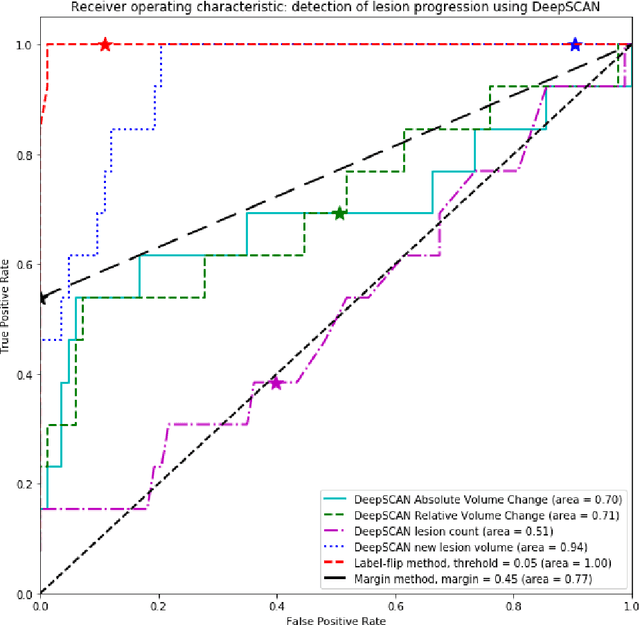
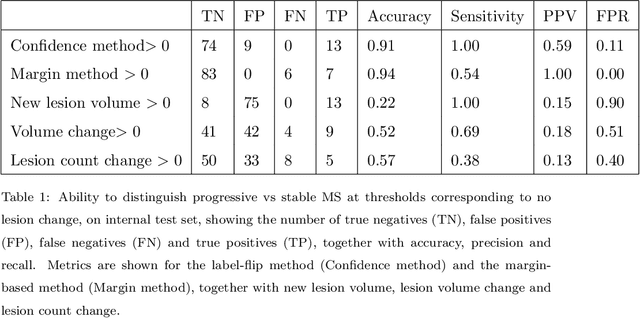
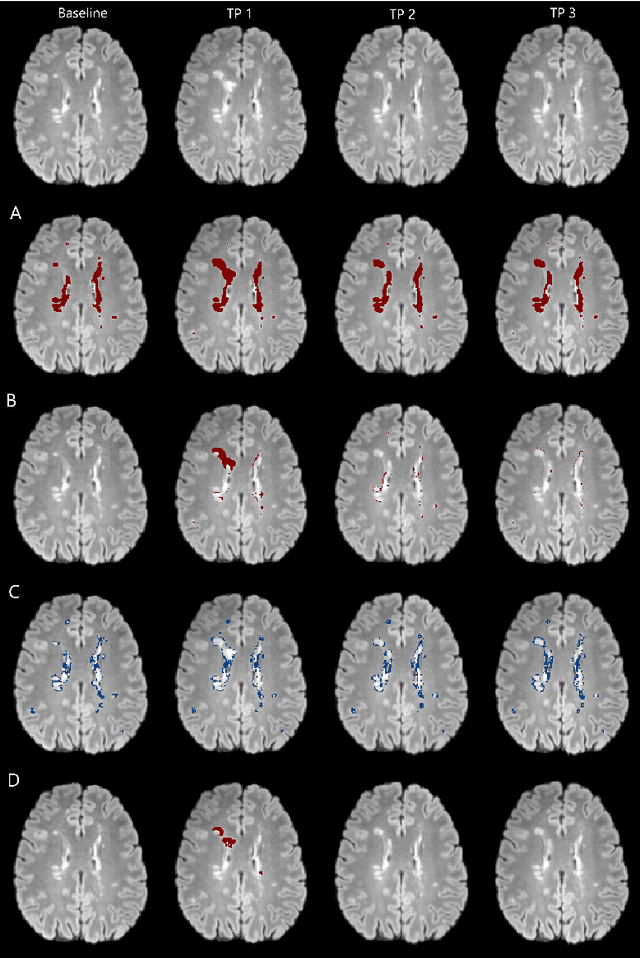
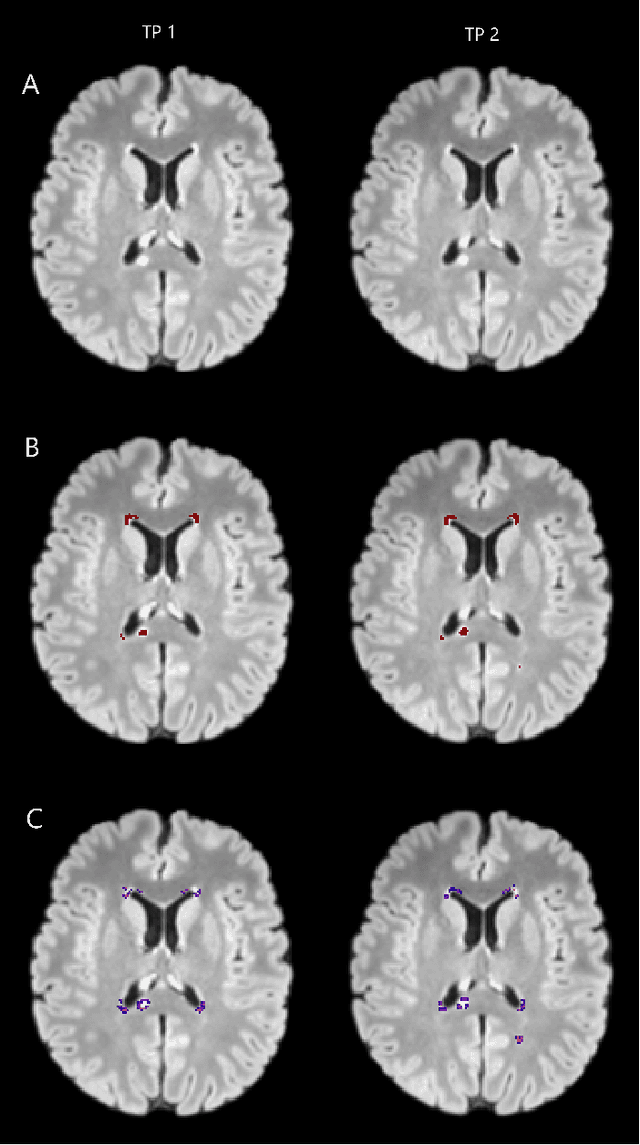
Abstract:The detection of new or enlarged white-matter lesions in multiple sclerosis is a vital task in the monitoring of patients undergoing disease-modifying treatment for multiple sclerosis. However, the definition of 'new or enlarged' is not fixed, and it is known that lesion-counting is highly subjective, with high degree of inter- and intra-rater variability. Automated methods for lesion quantification hold the potential to make the detection of new and enlarged lesions consistent and repeatable. However, the majority of lesion segmentation algorithms are not evaluated for their ability to separate progressive from stable patients, despite this being a pressing clinical use-case. In this paper we show that change in volumetric measurements of lesion load alone is not a good method for performing this separation, even for highly performing segmentation methods. Instead, we propose a method for identifying lesion changes of high certainty, and establish on a dataset of longitudinal multiple sclerosis cases that this method is able to separate progressive from stable timepoints with a very high level of discrimination (AUC = 0.99), while changes in lesion volume are much less able to perform this separation (AUC = 0.71). Validation of the method on a second external dataset confirms that the method is able to generalize beyond the setting in which it was trained, achieving an accuracy of 83% in separating stable and progressive timepoints. Both lesion volume and count have previously been shown to be strong predictors of disease course across a population. However, we demonstrate that for individual patients, changes in these measures are not an adequate means of establishing no evidence of disease activity. Meanwhile, directly detecting tissue which changes, with high confidence, from non-lesion to lesion is a feasible methodology for identifying radiologically active patients.
Simultaneous lesion and neuroanatomy segmentation in Multiple Sclerosis using deep neural networks
Jan 22, 2019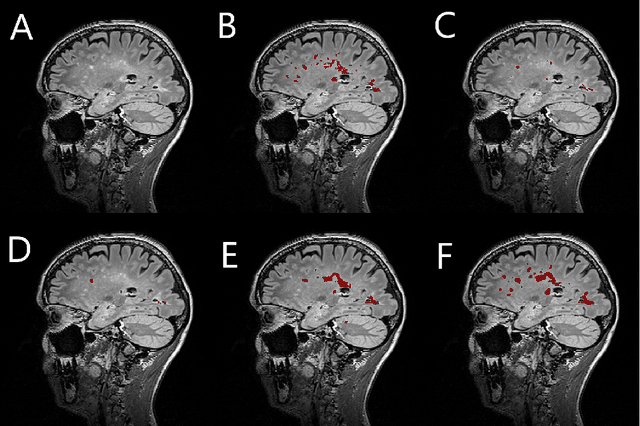
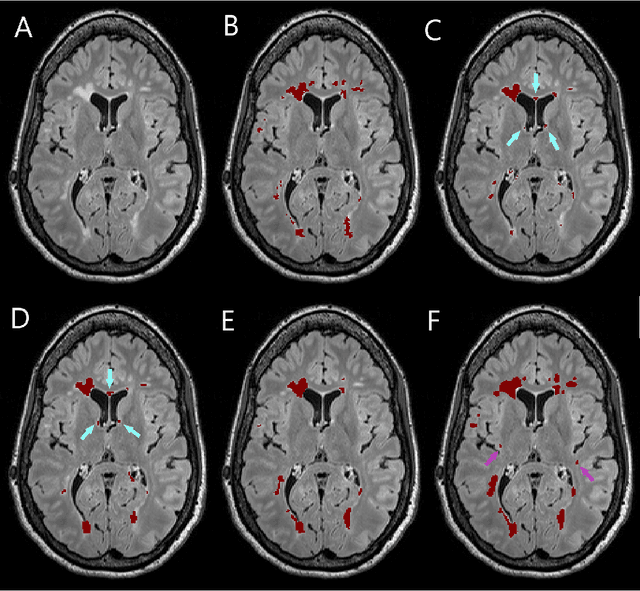
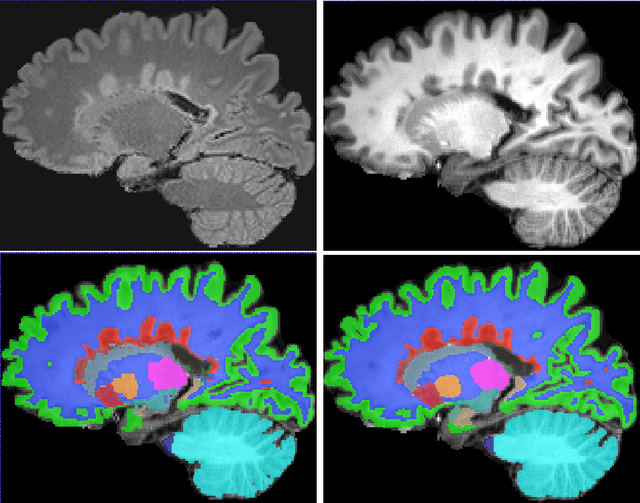
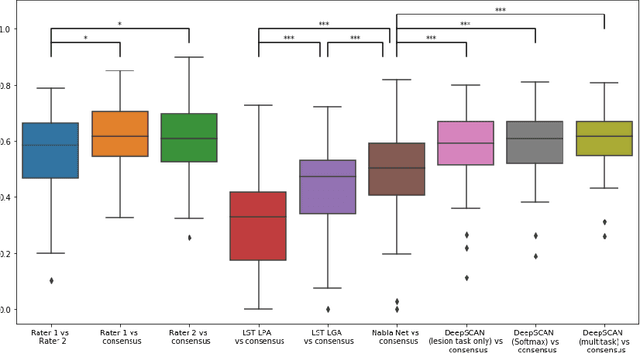
Abstract:Segmentation of both white matter lesions and deep grey matter structures is an important task in the quantification of magnetic resonance imaging in multiple sclerosis. Typically these tasks are performed separately: in this paper we present a single CNN-based segmentation solution for providing fast, reliable segmentations of multimodal MR imagies into lesion classes and healthy-appearing grey- and white-matter structures. We show substantial, statistically significant improvements in both Dice coefficient and in lesion-wise specificity and sensitivity, compared to previous approaches, and agreement with individual human raters in the range of human inter-rater variability. The method is trained on data gathered from a single centre: nonetheless, it performs well on data from centres, scanners and field-strengths not represented in the training dataset. A retrospective study found that the classifier successfully identified lesions missed by the human raters. Lesion labels were provided by human raters, while weak labels for other brain structures (including CSF, cortical grey matter, cortical white matter, cerebellum, amygdala, hippocampus, subcortical GM structures and choroid plexus) were provided by Freesurfer 5.3. The segmentations of these structures compared well, not only with Freesurfer 5.3, but also with FSL-First and Freesurfer 6.1.
 Add to Chrome
Add to Chrome Add to Firefox
Add to Firefox Add to Edge
Add to Edge